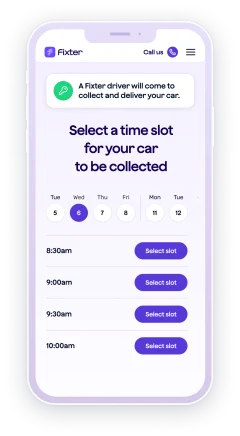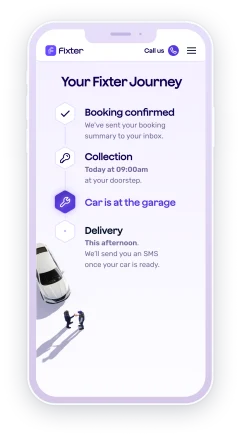Choosing the right car transmission can be a perplexing decision for many drivers. Automatic and Continuously Variable Transmissions (CVTs) both offer unique benefits and can significantly influence your driving experience. While automatic transmissions have been the standard for decades, providing a smooth ride with distinct gear shifts, CVTs have gained popularity for their seamless and efficient power delivery. Understanding the nuances between these two systems can help you make an informed choice that suits your needs and driving style. Join us as we delve into the mechanics and benefits of each, ensuring you're well-equipped to select the transmission that best fits your lifestyle.
The Basics of Automatic Transmissions
Automatic transmissions have been a staple in the automotive industry for many years. They provide drivers with a user-friendly experience by automatically changing gears, allowing for a smoother ride without manual input. This section will delve into how these systems function and their respective advantages and disadvantages.
How Automatic Transmissions Work
An automatic transmission uses a complex system of gears, clutches, and bands to shift gears without any input from the driver. It relies on a torque converter, which connects the engine to the transmission, adjusting the power flow. When you accelerate or decelerate, the transmission selects the appropriate gear ratio, ensuring optimal engine performance.
Fluid Coupling: The torque converter transfers power from the engine, using fluid dynamics to adjust the speed and torque.
Planetary Gear Set: This set of gears provides various gear ratios. It enables the car to shift seamlessly between different speeds.
Hydraulic System: Controls the clutches and bands that lock different parts of the planetary gear set to select the correct gear.
Overall, automatic transmissions offer a simplified driving experience, ensuring that both novice and experienced drivers can focus more on the road than gear changes.

Pros and Cons of Automatic Gearboxes
Automatic gearboxes are favoured for their ease of use. Pros include:
Convenience: They allow drivers to keep both hands on the wheel and focus on the road.
Smooth Ride: Gear changes are seamless, reducing the likelihood of engine stalling.
However, there are also some drawbacks:
Fuel Efficiency: Automatics tend to consume more fuel compared to manual transmissions.
Cost: Repairs and maintenance can be more expensive due to the complexity of the system.
In essence, while automatics offer comfort and ease, they might not be the ideal choice for those prioritising fuel economy or looking for a more engaging driving experience.
Understanding CVT Technology
Continuously Variable Transmissions, or CVTs, are a more recent innovation in the automotive world. Unlike traditional transmissions, CVTs offer a seamless driving experience by providing an infinite range of gear ratios. This section explores the defining features of CVTs, along with their advantages and potential drawbacks.
What Sets CVTs Apart
CVTs operate differently from conventional transmissions. Instead of using a fixed set of gears, they utilise a system of pulleys and a steel belt, allowing for a smooth transition between gear ratios. This ensures the engine operates at its most efficient RPM (revolutions per minute) at all times.
Variable Pulley System: This system comprises two pulleys connected by a belt, which can adjust to any size to change the gear ratio.
Efficiency: By maintaining optimal engine speed, CVTs maximise fuel efficiency.
Simplicity: Fewer moving parts mean CVTs often require less maintenance compared to traditional automatic systems.
The seamless nature of CVTs provides a smoother and more efficient driving experience, particularly in urban settings where stop-and-go traffic is common.
Advantages and Drawbacks of CVTs
CVTs are celebrated for their ability to adapt to driving conditions without the need for gear shifts. Advantages include:
Fuel Economy: Generally more efficient than automatics, as they keep the engine at optimal efficiency.
Smoothness: Provide a continuous power flow without noticeable gear changes.
However, they do have some downsides:
Driving Feel: Some drivers find the lack of gear changes less engaging.
Durability: Although simpler in design, CVTs can be costly to repair if they fail.
Ultimately, while CVTs shine in fuel efficiency and smooth operation, they may not match the driving satisfaction that some experience with traditional gearboxes.
Choosing Between Automatic and CVT
Deciding between an automatic and a CVT can be challenging, as both offer distinct experiences. This section will guide you through the factors to consider when making your choice and provide practical advice to help ensure you select the transmission that aligns with your needs.
Factors to Consider
When choosing between an automatic and a CVT, consider the following factors:
Driving Environment: If you frequently drive in city traffic, a CVT might offer better fuel efficiency.
Driving Style: For those who prefer a more engaged driving experience, traditional automatics may be more satisfying.
Maintenance Costs: Automatics typically have higher maintenance costs, whereas CVTs can be more affordable if properly maintained.
Longevity: Consider the long-term reliability and resale value of vehicles with each transmission type.
These factors can significantly influence which transmission is more suitable for your lifestyle and needs.
Making the Right Decision
Ultimately, the right choice boils down to your personal preferences and driving habits. Consider the following steps to make an informed decision:
Test Drive: Experience both transmission types to see which suits your driving style.
Research: Evaluate maintenance costs and overall reliability for the specific models you're interested in.
Consult Professionals: Speak to mechanics or automotive experts about the pros and cons of each type for the car you have in mind.
By taking these considerations into account, you can confidently make a choice that enhances your driving experience and meets your practical needs.









